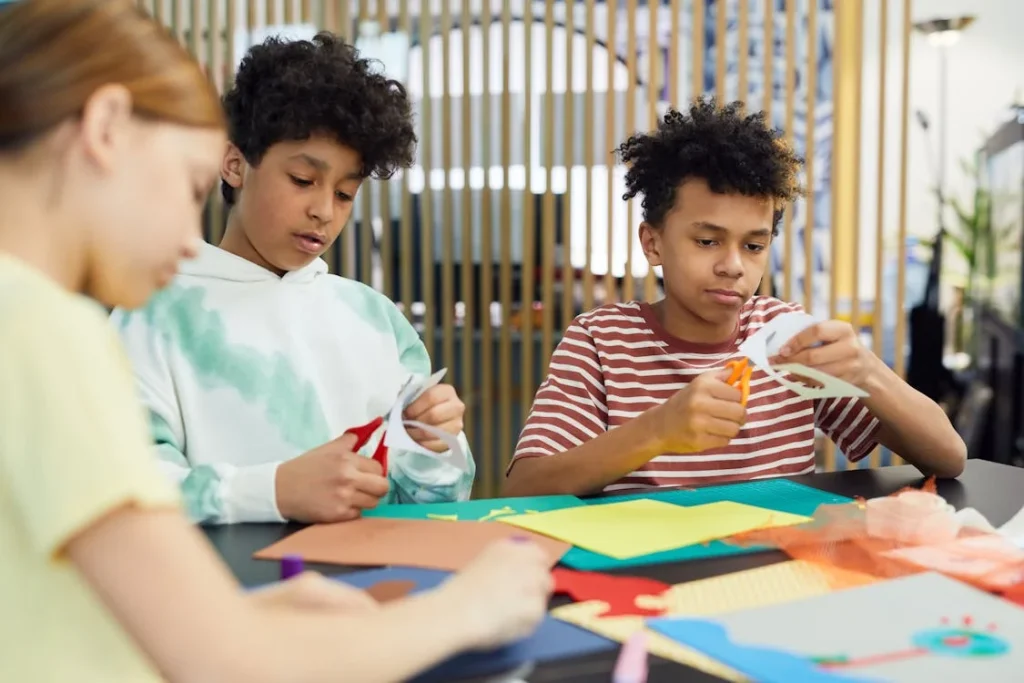
Picture books are pivotal in early childhood development, offering more than just entertainment. They are the foundation for young children’s language skills, cognitive growth, and emotional intelligence. By introducing preschoolers to the joys of reading, picture books foster a lifelong love for literature and learning.
Crafting an engaging picture book for preschoolers involves combining creativity and understanding their unique needs. This guide will equip you with practical tips and expert insights to create stories that captivate young minds. Whether you’re an aspiring author or a seasoned writer, these strategies will help you bring your ideas to life.
Understanding Your Audience
When crafting picture books for preschoolers, it’s crucial to understand their unique developmental stages. Typically aged 2-5, these youngsters are honing their cognitive, emotional, and social skills. They have short attention spans, so captivating content is a must. Simple, repetitive language helps reinforce learning. Opt for familiar themes like family, animals, bedtime, and everyday routines to keep them engaged and make the story relatable.
Key Elements of Engaging Picture Books
Crafting engaging picture books for preschoolers involves a few essential ingredients. Let’s break them down:
1. Simple and Relatable Storyline
- Clear Plot: Stick to a straightforward narrative that’s easy to follow.
- Relatable Characters: Introduce characters that reflect qualities or issues preschoolers can connect with.
- Familiar Settings: Set stories in places children know well, like homes or playgrounds.
2. Visual Appeal
- Bright, Bold Illustrations: Use vibrant colors and clear lines to capture and hold attention.
- Interactive Elements: Include flaps, textures, or pop-ups to make the book a tactile adventure.
- Page Layout: Balance text and images to avoid clutter and maintain readability.
3. Repetition and Rhythm
- Predictable Patterns: Use recurring phrases to create anticipation.
- Rhyming and Rhythm: Incorporate rhymes or rhythms for a musical quality that captivates.
- Repetition for Learning: Repeat key phrases or words to aid memory and understanding.
4. Age-Appropriate Vocabulary
- Simple Words and Phrases: Use language that’s easily understandable for preschoolers.
- Introduction to New Words: Gently incorporate new vocabulary in context.
5. Themes and Lessons
- Moral and Social Lessons: Embed simple, clear messages like empathy or sharing.
- Emotional Resonance: Address common feelings in an age-appropriate way to build emotional intelligence.
- Problem Solving: Present basic challenges and resolutions to encourage critical thinking.
Practical Tips for Crafting Picture Books
Creating picture books for preschoolers can be both fulfilling and challenging. Here are some tips to help you succeed.
Step 1: Brainstorming and Planning
Start with a concept or theme that resonates with preschoolers, focusing on familiar topics like animals, family, or playful adventures. Once you have your idea, create a storyboard to visualize the narrative flow. Mapping out each page ensures your story progresses smoothly and engages young readers.
Step 2: Writing the Manuscript
Begin by writing a rough draft focusing on story flow and key elements. Don’t worry about perfection at this stage; just aim to get the core ideas down. Afterward, seek feedback from parents, educators, or children, and refine your manuscript based on their input. Throughout the process, maintain a cheerful, friendly tone to make the story inviting and enjoyable for preschoolers.
Step 3: Collaboration with Illustrators
Select an illustrator whose style matches your vision by reviewing their previous work to ensure it aligns with the feel of your story. Collaborate closely to ensure the text and illustrations complement each other. Regular communication helps create a harmonious blend of words and pictures.
Step 4: Design and Production
When deciding on format and size, consider the practicalities of book handling by small hands. Choose sizes that are easy to hold and simple pages for little ones to turn. Additionally, use durable materials to ensure the book withstands repeated handling. Thick pages and sturdy bindings are essential for a picture book that will be loved and used often.
Common Mistakes to Avoid
Overcomplicating the Story: Keep it simple. Preschoolers thrive on straightforward narratives. Complex plots can confuse young minds, so focus on clear, easy-to-follow stories.
Ignoring the Importance of Illustrations: Remember the visual focus. Pictures often speak louder than words for this age group. Engage little readers with vibrant and expressive illustrations.
Inappropriate Content: Ensure content is age-appropriate. Always consider developmental levels, avoiding themes or language that are confusing or frightening for preschoolers.
Author Bio
Andrea Gibbs, a lifelong New Yorker, balances the demands of being a work-from-home mom with her expertise in business development, strategy, and social media marketing. Andrea contributes to the Kemit Academy blog in Chicago, IL, offering insights and guidance to help parents set their children up for academic success. In her role as Content Manager at SpringHive Web Design Company, she ensures the delivery of exceptional content for a wide array of clients. When not immersed in her professional duties, Andrea finds joy in exploring new recipes and spending quality time with her family.

